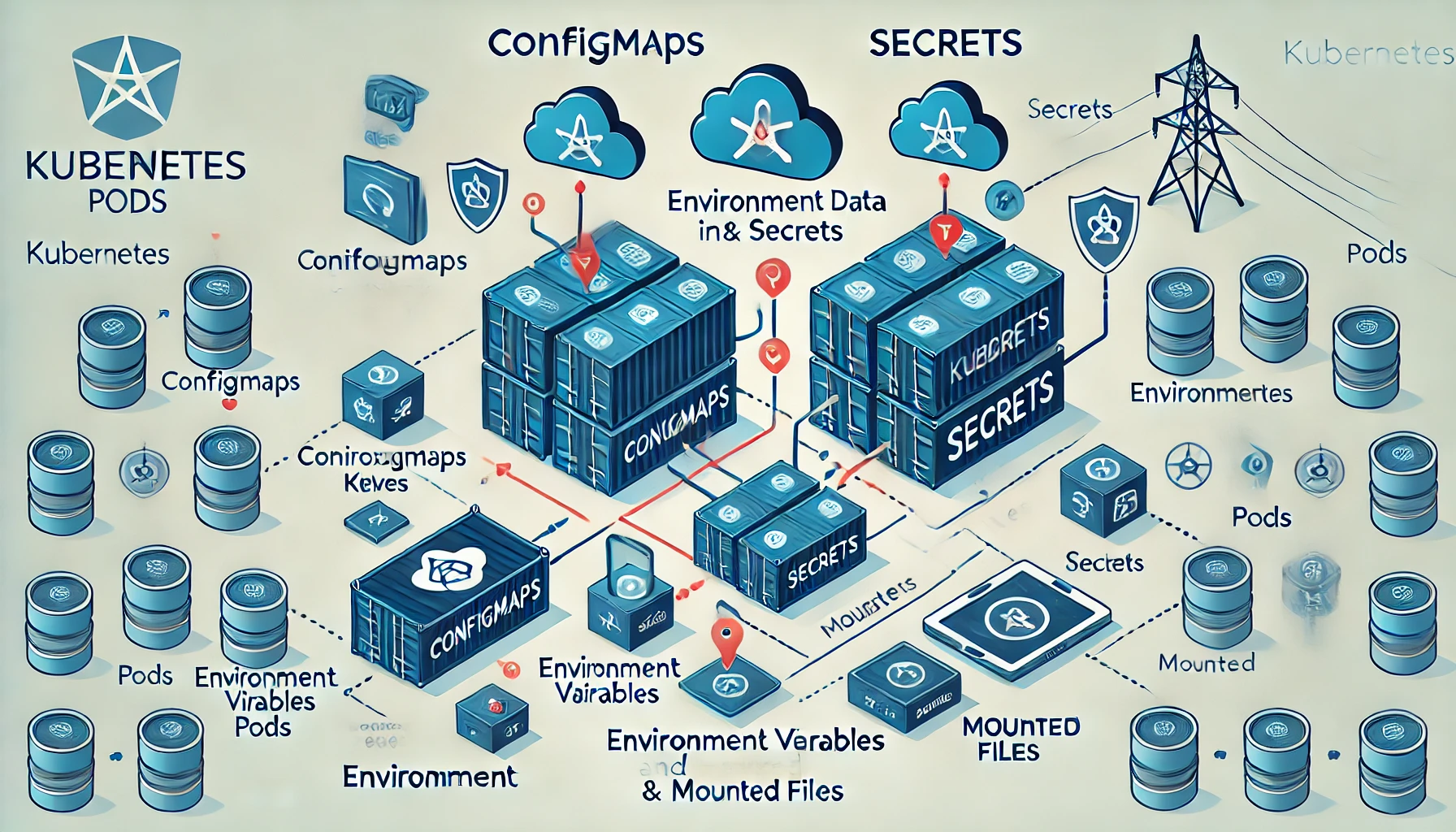Day 19 of 40DaysofKubernetes : Kubernetes Configmaps and Secrets
 Rahul Vadakkiniyil
Rahul Vadakkiniyil
Kubernetes is a powerful orchestration platform that helps manage containerized applications at scale. Two essential resources in Kubernetes for managing configuration data are ConfigMaps and Secrets. Both play a crucial role in configuring and securing your applications.
Why Use ConfigMaps?
ConfigMaps are used to store configuration data in key-value pairs. They help separate configuration data from the container image, allowing you to manage configurations independently from your application code. This separation provides several benefits:
Flexibility: You can change the configuration without rebuilding the container image.
Reusability: The same configuration can be reused across different environments (e.g., development, staging, production).
Scalability: Configuration changes can be rolled out without downtime or redeployment of the entire application.
The Need for ConfigMaps and Secrets in Kubernetes
Both ConfigMaps and Secrets are crucial for Kubernetes applications:
ConfigMaps: Used for storing non-confidential data such as configuration files, command-line arguments, and environment variables.
Secrets: Used for storing sensitive information like passwords, OAuth tokens, and SSH keys. Secrets are encoded in base64 to provide an additional layer of security.
Differences Between ConfigMaps and Secrets
While ConfigMaps and Secrets are similar in many ways, they serve different purposes and have key differences:
| Aspect | ConfigMap | Secret |
| Data Type | Non-confidential configuration data | Sensitive data (e.g., passwords, tokens) |
| Encoding | Plain text | Base64 encoded |
| Access Control | No additional security layers | Encrypted at rest and in transit |
| Use Cases | Application settings, configuration files | Credentials, API keys, certificates |
Creating a ConfigMap
There are several ways to create a ConfigMap in Kubernetes:
1. From a Literal Value
kubectl create configmap example-config --from-literal=key1=value1 --from-literal=key2=value2
2. From a File
kubectl create configmap example-config --from-file=config-file.properties
3. From a Directory
kubectl create configmap example-config --from-file=config-dir/
4. Using a YAML Manifest
apiVersion: v1
kind: ConfigMap
metadata:
name: example-config
data:
key1: value1
key2: value2
Apply the YAML file:
kubectl apply -f configmap.yaml
Injecting ConfigMap into a Pod
To inject a ConfigMap into a Pod, you can use environment variables or volumes.
Using Environment Variables
You can inject ConfigMap data as environment variables into a container.
Single Environment Variable
apiVersion: v1
kind: Pod
metadata:
name: example-pod
spec:
containers:
- name: mycontainer
image: busybox
env:
- name: KEY1
valueFrom:
configMapKeyRef:
name: example-config
key: key1
Multiple Environment Variables
apiVersion: v1
kind: Pod
metadata:
name: example-pod
spec:
containers:
- name: mycontainer
image: busybox
envFrom:
- configMapRef:
name: example-config
Using Volumes
You can mount ConfigMap data as files inside the container.
apiVersion: v1
kind: Pod
metadata:
name: example-pod
spec:
containers:
- name: mycontainer
image: busybox
volumeMounts:
- name: config-volume
mountPath: /etc/config
volumes:
- name: config-volume
configMap:
name: example-config
In this example, the ConfigMap data will be available in the /etc/config directory inside the container.
Different Ways to Reference ConfigMap Data into the Pod
There are several methods to reference ConfigMap data within a pod:
Using
envto Define Single Environment Variables: Referencing individual keys in the ConfigMap.Using
envFromto Define All ConfigMap Data as Environment Variables: Referencing the entire ConfigMap to inject all key-value pairs as environment variables.Using Volumes: Mounting ConfigMap data as files or directories within the container.
Example Using envFrom
apiVersion: v1
kind: Pod
metadata:
name: example-pod
spec:
containers:
- name: mycontainer
image: busybox
envFrom:
- configMapRef:
name: example-config
Example Using Volumes
apiVersion: v1
kind: Pod
metadata:
name: example-pod
spec:
containers:
- name: mycontainer
image: busybox
volumeMounts:
- name: config-volume
mountPath: /etc/config
volumes:
- name: config-volume
configMap:
name: example-config
In this setup, the ConfigMap data will be available in the /etc/config directory inside the container.
Conclusion
ConfigMaps and Secrets are fundamental components in Kubernetes for managing configuration and sensitive data. They provide a flexible and secure way to handle application settings and credentials. By separating configuration data from container images, ConfigMaps and Secrets help maintain a clean and scalable deployment workflow. Understanding how to create, manage, and inject these resources into your applications is essential for any Kubernetes practitioner.
Reference
Subscribe to my newsletter
Read articles from Rahul Vadakkiniyil directly inside your inbox. Subscribe to the newsletter, and don't miss out.
Written by
